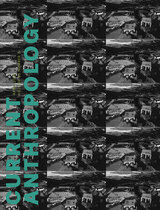11 books about Munawar, M.
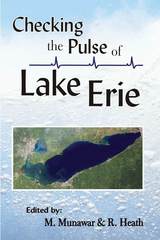
Checking the Pulse of Lake Erie
M. Munawar
Michigan State University Press, 2008
The progress of research on Lake Erie has been marked by several milestone publications during the long struggle to restore the system. The reports of the U.S. Federal Water Pollution Control Administration (1968) and the International Joint Commission (1969) described Lake Erie in the depths of degradation. “Lake Erie in the Early Seventies” (1976) recorded the status of limnology and fisheries in the lake before remedial programs were implemented. “State of Lake Erie” (1999) described the state of the lake in response to remedial actions and at early stages of the invasion of dreissenid mussels. Checking the Pulse of Lake Erie is an update of “State of Lake Erie” in light of continued efforts at restoration and impacts from nonindigenous species. This book contains twenty papers contributed by authors from a broad spectrum of disciplines and research interests.
[more]
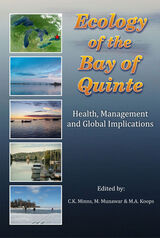
Ecology of the Bay of Quinte
Health, Management and Global Implications
C.K. Minns
Michigan State University Press, 2022
Project Quinte was a Canadian multi-agency collaborative initiative—launched in 1972 and lasting until 2018—that generated the longest ecosystem-based data set in the Great Lakes. The project produced a special bulletin of the Canadian Journal of Fisheries Science in 1986 and two special issues of Aquatic Ecosystem Health & Management more recently. This monograph provides a broad sweep of the many facets of aquatic ecosystem structure and function that were explored in efforts to define and solve the challenges to ecosystem health present in the Bay of Quinte ecosystem and to sustain it hopefully far into the future. Many papers provide a long-term perspective that highlights the need to maintain monitoring programs while increasing our basic knowledge. Long-term studies of ecosystems like Quinte continually reveal new questions and challenges beyond the scope of controlled laboratory experiments. The health of the Bay of Quinte is much improved as a result of the long-term participation of people, time, and resources reflected in this book. The monograph through its twenty-six in-depth chapters opens a wide panorama for exploration and application of the ecosystem approach and the resulting productivity, with much remaining to be done by those that follow in these footsteps. Approximately one hundred scientists have collectively participated toward the preparation of various chapters included in this meticulously peer-reviewed monograph.
[more]
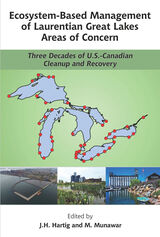
Ecosystem-Based Management of Laurentian Great Lakes Areas of Concern
Three Decades of U.S. - Canadian Cleanup and Recovery
John H. Hartig
Michigan State University Press, 2021
This installment of the Ecovision World Monograph Series provides an in-depth look at the remediation and restoration of the forty-three most polluted areas of the Great Lakes, which are designated Areas of Concern (AOCs). This restoration effort, a collaboration between Canada and the United States, is unique in that it has fostered the use of locally designed ecosystem approaches to restoring impaired beneficial uses, as called for in the Canada-U.S. Great Lakes Water Quality Agreement. In total, thirty-seven Canadian and U.S. scientists contributed to this comprehensive evaluation of what has been achieved and learned from more than three decades of remediation and restoration efforts. This monograph will be an excellent resource to researchers, resource managers, university faculty, and students in the Great Lakes Basin Ecosystem, as well as for those interested in restoring degraded aquatic ecosystems throughout the world. No other monograph or text book provides such a comprehensive evaluation of AOCs. A foreword is provided by Dr. Diane Saxe, former Environmental Commissioner of Ontario. Leading primary contributors include J. Hartig, M. Munawar, L. Richman, S. Pickard, M. Tuchman, R. Stewart, J. Ridgeway, R. Sherman, N. French, K. Williams, G. Krantzberg, and C. McLaughlin.
[more]
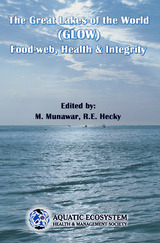
The Great Lakes of the World (GLOW)
Food-Web, Health and Integrity
M. Munawar
Michigan State University Press, 2001
The Great Lakes of the World (GLOW) is a series of international symposia organized by the Aquatic Ecosystem Health and Management Society in order to promote interaction and communication between Great Lakes scientists and communities around the world. The purpose of GLOW is to establish a platform where understanding of structure, function, and performance of healthy and damaged ecosystems from integrated, multidisciplinary, and sustainable perspectives is promoted. This book includes papers originating in part from the first of many international symposia—Exploring the Great Lakes of the World: Food-Web Dynamics, Health and Integrity, held at Victoria Falls, Zimbabwe. The following is adapted from the editorial: “As scientists, we accept that we can never know everything at one time about large aquatic ecosystems, due to temporal and spatial measurement limitations. This uncertainty can be reduced through sharing our knowledge of large systems so that others can incorporate our results into analyses of their systems. To that end, this book is a remarkable achievement as it does accomplish global coverage of large and great lakes.”
[more]
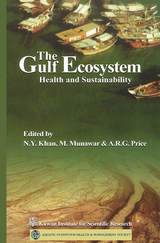
The Gulf Ecosystem Health and Sustainability
N. Y. Khan
Michigan State University Press, 2002
The Persian Gulf’s marine environment has suffered from a variety of perturbations, most resulting directly or indirectly from the extraction of oil and subsequent development projects—drilling, refining, dredging, and landfilling, as well as from worldwide maritime transportation. In addition, the environment and its people have suffered from the Iran-Iraq war in the early 1980s and from Iraq’s invasion of Kuwait in 1990. Since then the countries of the Gulf, in collaboration with regional and international organizations, have initiated extensive measures for the protection and conservation of the Gulf. One such initiative was the decision by the Kuwait Institute for Scientific Research to publish a state-of-the-art monograph to address and document the complex subject of the health and sustainability of the gulf ecosystem.
[more]
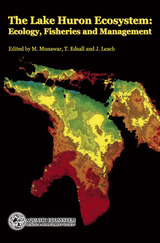
The Lake Huron Ecosystem
Ecology, Fisheries and Management
M. Munawar
Michigan State University Press, 1995
Lake Huron is the second largest of the Great Lakes and the fifth largest lake in the world (surface area: 59,000 km2). It is also one of the least known lakes in the Great Lakes system in terms of limnology and food web dynamics. To rectify this, the Aquatic Ecosystem Health and Management Society organized an international symposium in September 1993, which they followed with the publication of this peer-reviewed book. In total, forty-five papers were presented during the conference on topics ranging from microbial ecology, the role of exotic species, and sediment toxicology, to fisheries and wildlife of Lake Huron and its basin. With few existing comprehensive reports on the limnology and fisheries of Lake Huron, this detailed book helps bridge the information gap by introducing a multidisciplinary and ecosystematic approach to Great Lake (particularly Lake Huron) research.
[more]
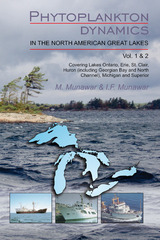
Phytoplankton Dynamics in the North American Great Lakes
Volumes 1 and 2
M. Munawar
Michigan State University Press, 2013
Phytoplankton Dynamics in the North American Great Lakes is the compilation of two volumes, originally published 1996 and 2000. Both volumes provide a thorough treatment of the community structure, function, and dynamics of phytoplankton in the North American Great Lakes and represent the culmination of nearly three decades’ worth of work by Mohiuddin Munawar and Iftekhar F. Munawar.
With these volumes, the phycology of the North American Great Lakes has been brought into the new millennium. Volume 1 focuses on the Lower Great Lakes—Lakes Ontario and Erie—while volume 2 highlights Lakes Michigan, Huron, and Superior. Phytoplankton Dynamics in the North American Great Lakes also includes a chapter devoted to the integration, summarization, and synthesis of the two volumes’ major findings, as well as a discussion of the current and future status of food-web research in the Great Lakes.
With these volumes, the phycology of the North American Great Lakes has been brought into the new millennium. Volume 1 focuses on the Lower Great Lakes—Lakes Ontario and Erie—while volume 2 highlights Lakes Michigan, Huron, and Superior. Phytoplankton Dynamics in the North American Great Lakes also includes a chapter devoted to the integration, summarization, and synthesis of the two volumes’ major findings, as well as a discussion of the current and future status of food-web research in the Great Lakes.
[more]
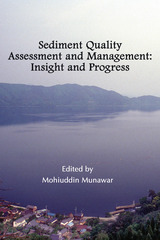
Sediment Quality Assessment and Management
Insight and Progress
M. Munawar
Michigan State University Press, 2003
Sediment contamination is an issue of concern throughout the world, and a major goal of the AEHMS has been to encourage the exchange of scientific knowledge on a worldwide basis. This is reflected in the global distribution of papers presented in this book, which summarizes the key findings of the Fourth International Symposium on Sediment Quality Assessment, held in Otsu, Japan, in October 2000. Sediment Quality Assessment and Management demonstrates how sediments and the organisms living in them provide an indication of spatial and temporal trends in contamination, how bioaccumulation is used to measure the bioavailable fraction of these contaminants, how toxicity tests can be used to measure environmental impacts, and how the cause of these effects can be identified.
[more]
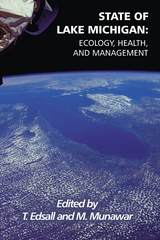
State of Lake Michigan
Ecology, Health, and Management
T. Edsall
Michigan State University Press, 2005
State of Lake Michigan is part of the Ecovision World Monograph Series, which is devoted to exploring the state, ecology, and integrity of the lakes. It is the formal outcome of an international symposium on Lake Michigan, organized by the Aquatic Ecosystem Health and Management Society, and chaired by T. Edsall and M. Munawar.
State of Lake Michigan reviews the status of the major Lake Michigan ecosystem components and provides a basis for evaluating the health of the lake and for promoting integrated management of this exceptional natural resource. The book consists of papers by professionals in the Great Lakes region who are recognized for their contributions to the advancement of Great Lakes science and management. The book also includes an extensive subject index. Other sections explore physical and chemical regimes, food web, water birds, wetlands, and management and initiatives.
State of Lake Michigan reviews the status of the major Lake Michigan ecosystem components and provides a basis for evaluating the health of the lake and for promoting integrated management of this exceptional natural resource. The book consists of papers by professionals in the Great Lakes region who are recognized for their contributions to the advancement of Great Lakes science and management. The book also includes an extensive subject index. Other sections explore physical and chemical regimes, food web, water birds, wetlands, and management and initiatives.
[more]
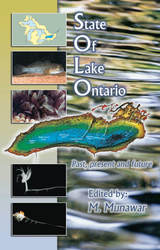
State of Lake Ontario
Past, Present and Future
M. Munawar
Michigan State University Press, 2003
The State of Lake Ontario is a giant step forward in the study of Lake Ontario’s fisheries and limnology. The sixty-three authors have contributed twenty-two papers on physical and chemical limnology, food-web linkages, fish community dynamics, contaminants, water birds, and impacts of nonindigenous species. As the “lake below the Falls,” Lake Ontario has long been impacted by invasive species. The historic invaders (sea lamprey, alewife, and white perch) were trouble enough, but recent invasions of dreissenid mussels, gobies, and crustaceans have further disrupted an unstable system. Contaminant burdens in fish and water birds have been a persistent problem. As the smallest of the Great Lakes, Lake Ontario has some of the biggest ecosystem health problems.
[more]
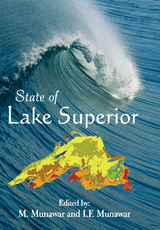
State of Lake Superior
M. Munawar
Michigan State University Press, 2009
Lake Superior was saved from the extremes felt elsewhere because it is the top of the drainage landscape. Superior offered the prospects of greatest success because it was, in general, least altered. Many decades later, Superior serves as the best example of success in recovering from environmental adversity. This is not to say that restoration is complete or that all ecological problems are resolved. The heavy hand of humanity continues to cause important threats to the present and future state of Lake Superior. State of Lake Superior offers a polythetic view of current conditions in Lake Superior and insightful suggestions about where and how improvements should continue. The chapters range from basic reviews of what we know as a consequence of effective research to explorations of what little we know about challenging environmental issues for the future. Among these are the continuing concerns about contaminants, the burgeoning march of invasive species, and the portent of global change. We find some encouragement in the resilience of this large lake ecosystem. In many respects, it is a success story, as is shown from the insights of research merged with the mindful attention of management agencies.
[more]
READERS
Browse our collection.
PUBLISHERS
See BiblioVault's publisher services.
STUDENT SERVICES
Files for college accessibility offices.
UChicago Accessibility Resources
home | accessibility | search | about | contact us
BiblioVault ® 2001 - 2025
The University of Chicago Press


